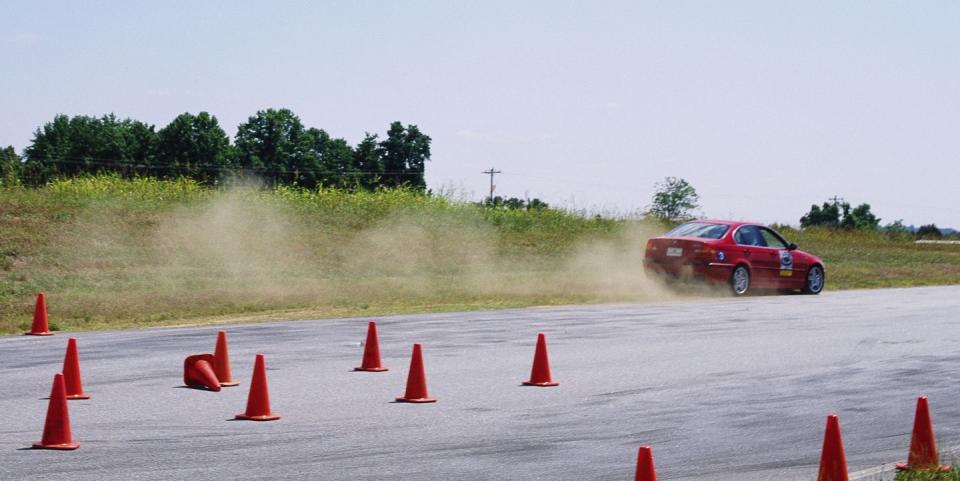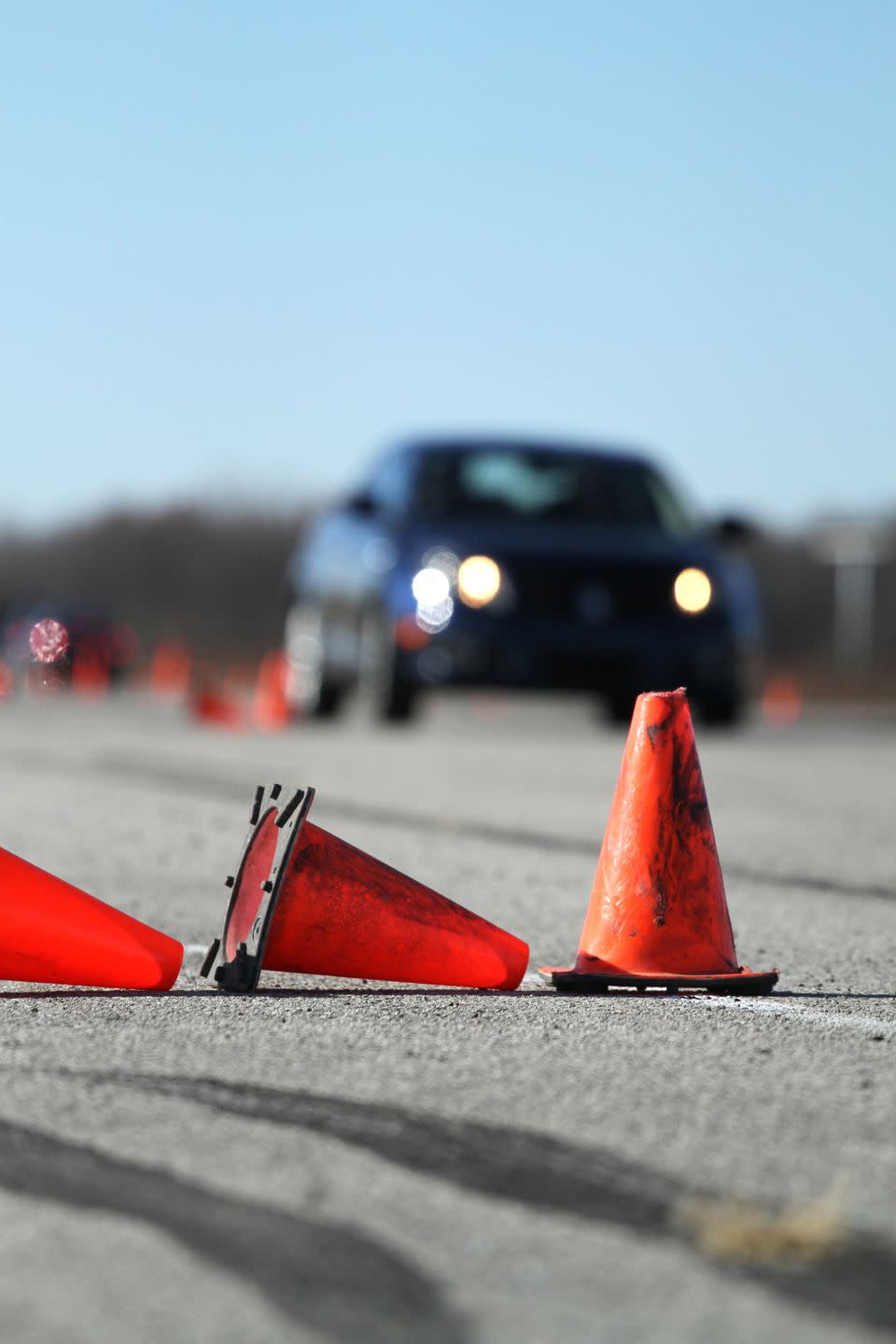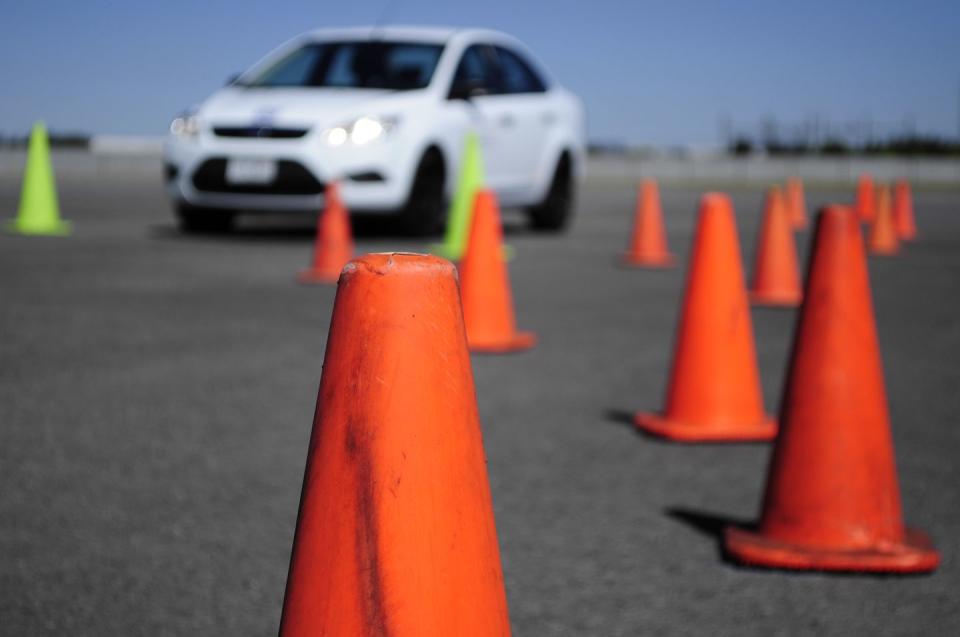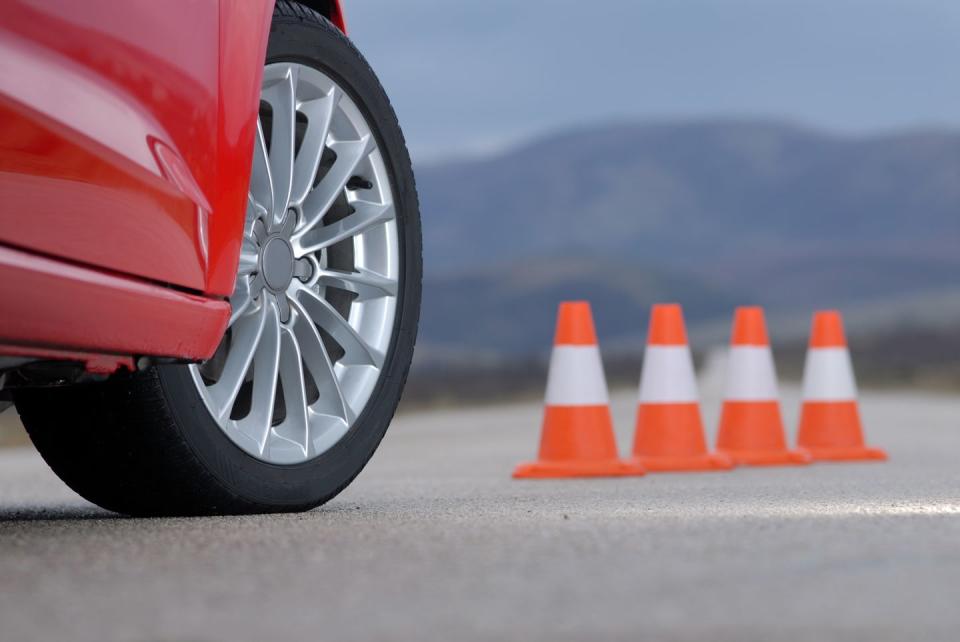A Hands-On Defensive-Driving Course Will Keep Your Teen Safer

Car and Driver has always believed in the value of advanced driver training beyond the perfunctory instruction available through high-school driver's-ed classes or from private learn-to-drive courses. The more you train, the more skilled a driver you will be. For today's crop of new drivers, whose traditional training has been abandoned by many public-school systems, a defensive-driving course can be one of the most important steps to staying safe on the road and driving with more confidence.
We are not talking here of the so-called defensive driving courses offered online by many public-service organizations, insurance companies, nonprofit groups, and for-profit companies. Some states sanction these online courses as a way to reduce the number of points on your license. Many states require habitual traffic offenders to take these online courses as part of their penalties-and completing one can enable drivers to keep their license when they'd otherwise lose it.

Certainly, some online courses have value. The National Safety Council offers helpful online training, and the NSC's videos on YouTube captured our attention with realistic reenactments of crash situations in traffic. The best part of the NSC training is that it costs just $25 to $41 per registered student.
In-Car Defensive-Driver Training Is Best
By far, the best defensive-driving training comes from the experience of driving real cars under the watchful eyes of expert instructors. We believe this hands-on instruction results in the greatest improvement in skills for anyone of any age but, most critically, new drivers. The oldest of these behind-the-wheel courses is the Tire Rack Street Survival Teen Driving School (TRSS) for 15- to 21-year-olds who already have a driver's license. This school runs $95 for a full day of classroom and closed-course driving, each student driving with a ride-along instructor. The TRSS has operated for 16 years and for the past six years has held more than 100 schools a year, with total graduates at 30,000.

The B.R.A.K.E.S. (Be Responsible and Keep Everyone Safe) nonprofit defensive-driving program for teens was founded in North Carolina in 2008 and has graduated 35,000 young drivers. This year, the program is scheduled to visit 40 courses in 11 states. Each of these classes is taught by professional instructors, most from the racing community, but they are free for 15- to 20-year-olds who have at least 30 hours of driving experience. Other well-known racing schools, such as the Bondurant Racing School and Skip Barber Racing School, offer excellent teen-driver training as well. Here in Car and Driver's home state, the Michigan State Police offer a comprehensive teen-defensive-driving program. So check with your state government to see if a similar program is available to you locally.
What Defensive Driving Means
Virtually all of these programs are called defensive-driving training. "Defensive driving is an antiquated term," explains Bill Wade, who runs Tire Rack's Street Survival program. "It always seemed wrong to me calling it 'defensive,' when I wanted to call it proactive, or taking the offensive. But then, 'offensive' sounds offensive. We like to call it prepared driving or awareness driving."
The TRSS organization evolved from a collaboration between BMW club racers and competitors in the Sports Car Club of America's amateur circuit. These clubs have extensive training for safe track driving, including advanced car control.
The TRSS program borrows from car-control skills racing drivers have used for decades to drive their cars to the limits. Like the best in-car defensive-driving courses, the TRSS program teaches young drivers what it feels like to brake hard, corner at tire-squealing speed, recover from skids, and swerve around hazards without losing control.

"Our instructors have to be able to explain weight transfer, understeer, and threshold braking to a 16-year-old who may not want to be there," Wade says. Street Survival instructors are all volunteers, car enthusiasts, and club racers and teach in 25 states, at 65 venues. Former IndyCar racer (and TV commentator) Scott Goodyear was once a volunteer instructor, for example.
Students are required to provide their own cars. “We feel it's very important to know what oversteer or panic braking feels like in your hand-me-down clapped-out Volvo wagon on tired shocks and questionable tires," Wade says.
The Case for Defensive-Driving Courses
While automakers and wizards in the tech industry work to automate the process of driving-with a frenzy of huge investments to produce self-driving cars and related infrastructure-failures in those development programs are showing just how complex and intuitive the act of driving a car is.

The motive behind this massively expensive industry effort to make cars driverless is in part to reduce the roughly 40,000 deaths per year in the U.S. caused by traffic crashes. But here at C/D, we feel we shouldn't blame the lack of technology for these traffic fatalities. Better drivers are fundamental to reducing the death rate: "Even years after taking our course, people email us about close calls their kids have had," Wade says. "We get emails constantly from parents who say if their kid hadn't taken the course, they wouldn't have come home alive."
Financial Benefits of Training
Some insurance companies will give a discount for completing a defensive-driving course, but discounts vary by state. There are other benefits, too: A 21-year-old who lives near C/D headquarters in Ann Arbor told us he got a job delivering gourmet cookies because the store manager liked that he had a certificate for completing the Street Survival course.
"One of our guiding principles is you can always improve," says Wade. At C/D, we agree.
('You Might Also Like',)

 Yahoo Autos
Yahoo Autos 